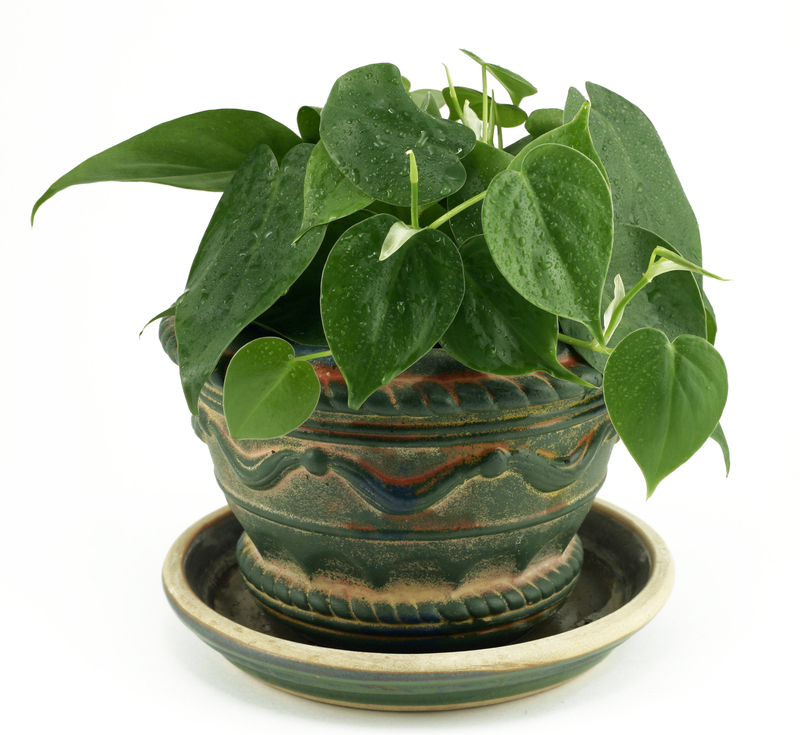Inspiring Ideas for a Kid-Friendly Garden Space
Posted on 14/08/2025
Inspiring Ideas for a Kid-Friendly Garden Space
Creating a kid-friendly garden space is one of the most inspiring gifts you can give your children. A garden specially designed for kids is more than just a place to play--it's a space that encourages creativity, curiosity, and develops a lifelong love for nature. In this comprehensive article, we'll dive into the most exciting and practical ways to transform your home garden into an outdoor haven designed especially for young explorers.

Why Design a Garden with Kids in Mind?
The benefits of a child-friendly garden extend far beyond play. When you design your garden as an interactive, safe, and engaging environment for children, you foster learning, promote healthy habits, and provide an open canvas for imaginative adventures. Whether it's engaging in hands-on gardening, watching butterflies, or just running around, a well-planned space can nurture every child's potential.
Main Benefits of a Kid-Safe Garden:
- Physical activity: Secure spaces for running, jumping, and climbing boost motor skills and health.
- Cognitive growth: Sensory gardens, wildlife observation, and growing plants stimulate curiosity and problem-solving.
- Emotional well-being: Nature helps reduce stress, improves mood, and encourages teamwork.
- Family bonding: Shared projects and playful adventures build lasting memories.
Key Elements of a Kid-Friendly Garden Design
When planning a safe and inspiring garden for kids, certain features and ideas can maximize fun while minimizing risks. Here are the fundamental elements:
1. Safety First
Before adding play features, ensure the space is genuinely kid-safe:
- Secure boundaries like fences or natural hedges to prevent wandering.
- Non-toxic plants: Avoid poisonous varieties such as foxglove, oleander, and lilies.
- Soft landings beneath climbing structures--think grass, mulch, or rubber mats.
- Remove sharp tools and hazardous chemicals from children's reach.
2. Choose the Right Plants for Children
Children are drawn to sensory-rich plants and colorful flowers. Consider these kid-centric botanical choices:
- Sunflowers: Tall, cheerful, and perfect for tracking growth and harvesting seeds.
- Strawberries, raspberries, and cherry tomatoes: Safe, edible, and encourage healthy snacking.
- Lamb's ear (Stachys byzantina): Silky, soft leaves that invite touch.
- Sweet-smelling herbs: Mint, lavender, and basil engage the sense of smell.
- Butterfly-attracting blooms: Zinnias, marigolds, coneflowers, and asters bring in pollinators for wildlife watching.
3. Incorporate Play Spaces and Structures
Kid-friendly gardens come alive with purpose-built play zones:
- Sand pits and mud kitchens let children dig, build, and cook with soil and water--fostering creative, sensory play.
- Treehouses and forts give kids their own hideaway to imagine, invent, and relax.
- Natural obstacle courses: Logs, stepping stones, and stumps test balance and coordination.
- Swings or climbing frames (safely installed) for energetic fun.
4. Educational and Interactive Zones
A garden for children is the ultimate outdoor classroom:
- Mini vegetable gardens teach responsibility, patience, and biology--kids can plant, water, and harvest their own food.
- Composting corners introduce concepts of sustainability and environmental stewardship.
- Wildlife habitats: Small ponds, birdhouses, or insect hotels invite observation and foster respect for animals.
5. Comfortable Relaxation Spaces
Even the busiest explorers need a place to recharge. Provide shady corners with:
- Hammocks or outdoor bean bags for reading and dreaming.
- Colorful picnic tables for snacks, crafts, and tea parties.
Creative Themes for Kids' Garden Spaces
Imagination is at the heart of every child-centric garden. Try these inspiring thematic garden ideas that spark wonder:
Enchanted Fairy Garden
Miniature houses, twinkling fairy lights, painted pebbles, and "magical" pathways can transform a shady corner into a secret world.
Wildlife Explorer's Garden
Create bug hotels, butterfly-friendly borders, and a birdwatching hide. Add a journal or chalkboard for nature notes.
Dinosaur Dig Site
Hide "fossils" or dinosaur bones for excavating in a sandbox. Plant prehistoric-looking ferns and cycads for authentically Jurassic vibes.
Edible Kitchen Garden
Design raised beds or planters just for children. Label each with hand-painted signs and let kids take charge of watering and harvesting.
Pirate Ship Playground
Build a wooden play ship with rope ladders, flags, and a lookout station. Sand "beaches" and blue ground tarps become an ocean for adventures.
DIY Projects to Personalize Your Child-Friendly Garden
Bringing children into the creative process builds a sense of pride and ownership. Try these hands-on, family-friendly projects:
- Painted rock markers: Turn stones into fun plant labels or fairy tale characters.
- Homemade wind chimes: Use shells, beads, keys, and sticks for whimsical garden music.
- Upcycled planters: Repaint rain boots, teapots, or old toys for unique plant homes.
- Personalized stepping stones: Let kids decorate pavers with handprints, marbles, or mosaics.
- DIY bird feeders: Reuse milk cartons or plastic bottles to make simple feeders together.
Practical Tips for Maintaining a Safe and Fun Kids' Garden
A fun-filled garden for children needs regular care to remain a safe and inviting place. Keep these best practices in mind:
- Schedule regular checks for splinters, sharp edges, and toxic plants as the garden changes with the seasons.
- Tidy up tools and garden chemicals out of children's reach after every session.
- Supervise water features at all times--cover ponds when not in use.
- Choose child-sized gloves and utensils for safety and comfort during gardening sessions.
- Teach garden rules: Don't eat unknown plants; be gentle with insects; share tools.
Encouraging Learning and Growth with a Garden for Children
A child-friendly garden is more than just a playground. It's an open-air classroom where children learn important lessons for life:
- Responsibility--watering, planting, and weeding their own patch.
- Patience--waiting for seeds to sprout and flowers to bloom.
- Science and math--measuring growth, counting seeds, observing lifecycles and seasons.
- Environmental awareness--composting, recycling, and respecting living things.
To create lasting engagement, try organizing weekly garden challenges: Who can spot the most butterflies? Whose sunflower grows the tallest? Which veggie ripens first?
Gardening with Kids: Tips for Every Age
Toddlers and Preschoolers (Ages 2-5)
- Choose sturdy, resilient plants and large seeds to handle (sunflowers, peas, beans).
- Keep beds and pathways low and wide for easy access.
- Focus on sensory play areas: sand, water, and mud-pie stations.
Young Children (Ages 6-9)
- Give responsibility for a small plot, planter, or container garden.
- Introduce simple gardening tools and explain basic plant care.
- Create art projects like painted pebbles and stepping stones.
Tweens and Teens (Ages 10+)
- Invite input on garden design and plant selection.
- Engage in more complex DIY projects such as building compost bins or wildlife houses.
- Allow independent exploration, nature journaling, and scientific experiments.
Adapting Small Spaces Into Kid-Friendly Gardens
Not every family has a large backyard, but that doesn't mean you can't create a fun garden space for kids. Here's how to make the most of patios, balconies, or compact yards:
- Use container gardens--window boxes, pots, and hanging planters for herbs, flowers, and cherry tomatoes.
- Vertical gardening--stacked planters, trellises, and wall pockets maximize growing space.
- Portable sand/water tables provide messy play even in limited areas.
- Foldable tents or pop-up playhouses for instant forts or fairy hideouts.

Seasonal Inspiration for Children's Gardens
Each season brings new opportunities for your children's garden:
- Spring: Plant seeds, watch bulbs bloom, set up nesting boxes for birds.
- Summer: Hold sunflower-growing contests, host garden picnics, catch fireflies.
- Autumn: Harvest pumpkins and root veggies, make leaf art, prepare beds for winter.
- Winter: Build twig structures, feed garden birds, age-safe garden crafts and planning sessions.
Conclusion: Growing Joy with a Kid-Friendly Outdoor Oasis
Designing an inspiring garden for kids is about balancing fun, learning, comfort, and safety. The best kids' garden spaces are those that invite exploration, creativity, and discovery--whatever your available space, climate, or budget. By involving children in planning and upkeep, you empower them as caretakers of nature and help them bloom alongside their green sanctuary.
Let your imagination--and theirs--lead the way. With a kid-friendly garden, every day outdoors is a new adventure waiting to happen.
If you have your own creative ideas or success stories about family gardening, share them with our readers in the comments below!
- Looking for more garden inspiration? Explore our related articles:

